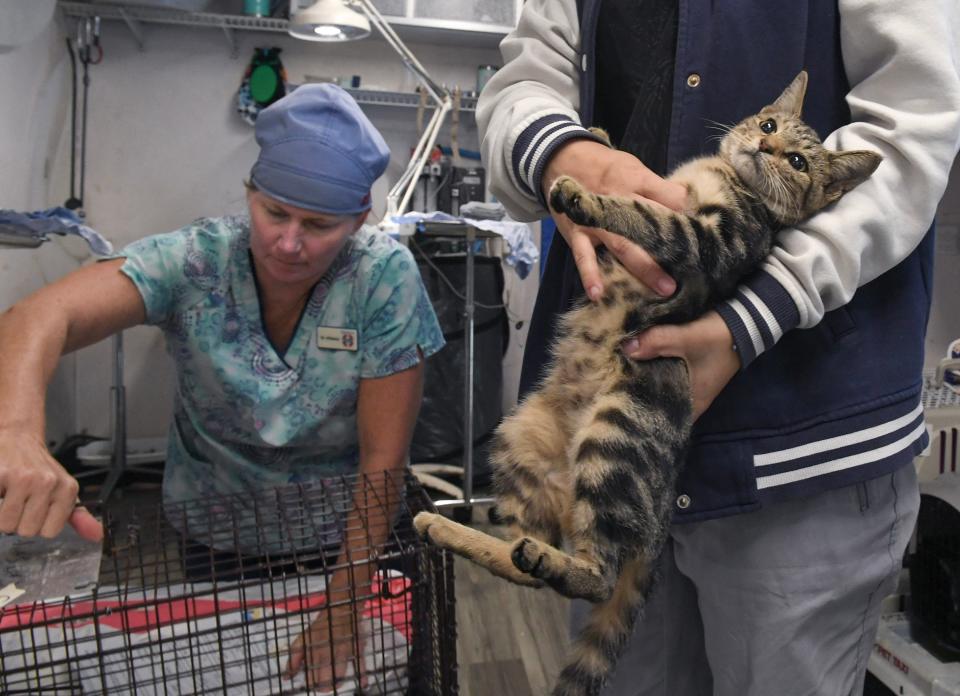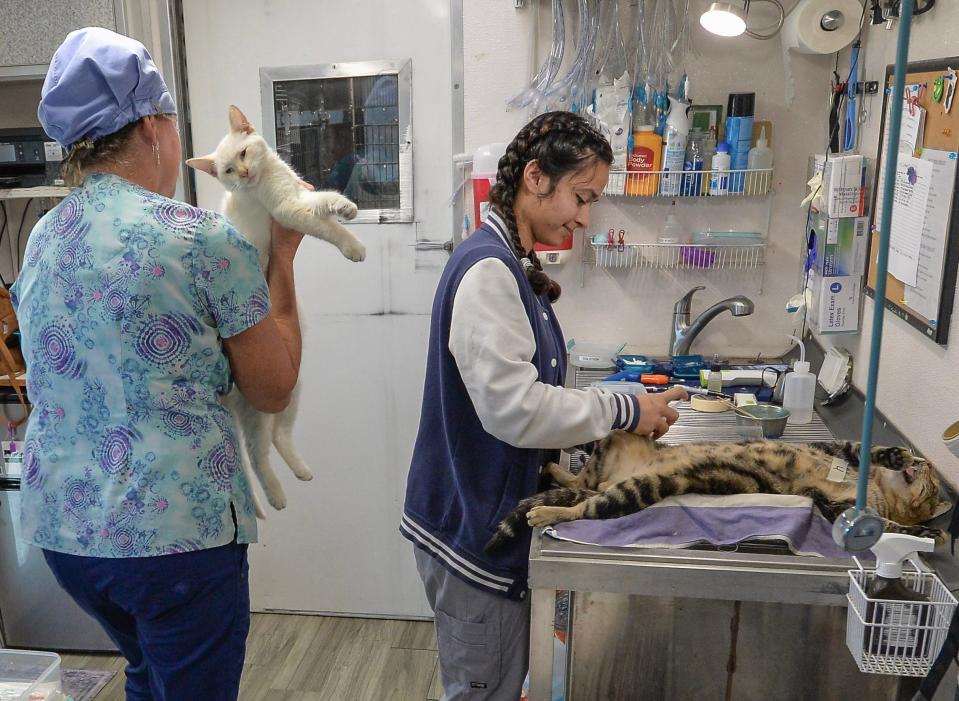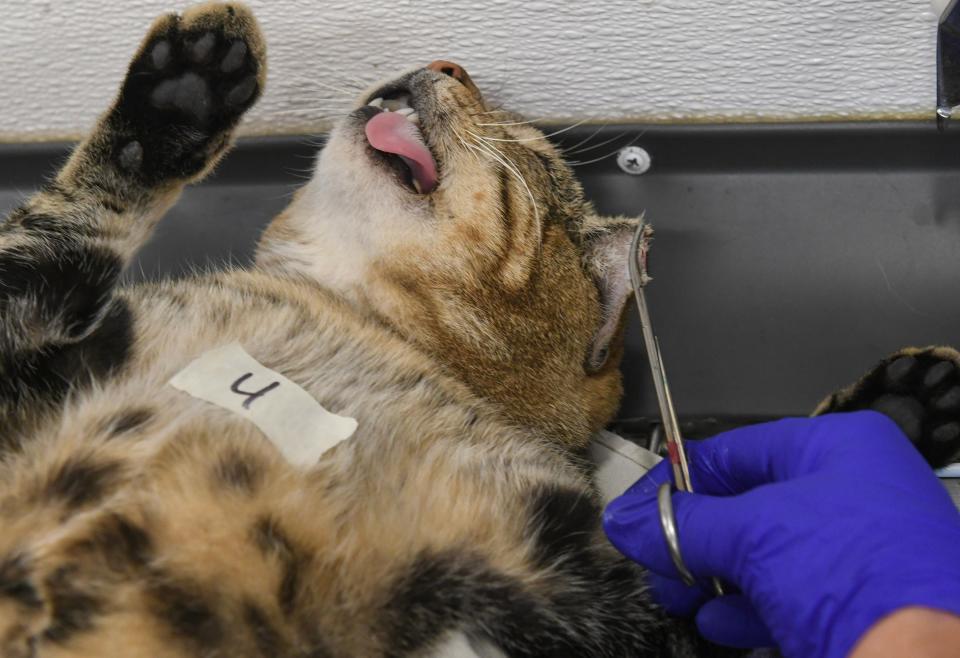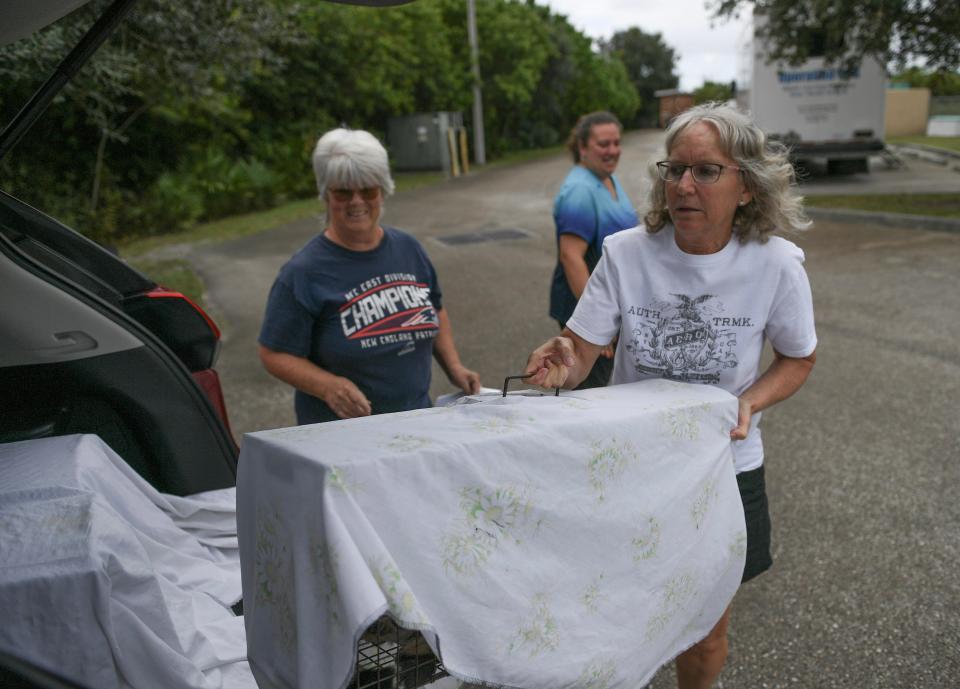'Community cat' control program in Port St. Lucie needs volunteers
PORT ST. LUCIE — A city program to help control “community” or free-roaming cats has served hundreds of kitties each year since the program began several years ago. Still, city officials hope for more volunteers and assistance for a greater impact.
The city’s trap, neuter, vaccinate, return (TNVR) initiative, a 5-year pilot program that started in 2019, works by humanely trapping “community cats” and taking them to a spay/neuter clinic for evaluation and sterilization by a veterinarian.

According to the city, free-roaming or “community cats” typically are a mix of feral cats, lost and abandoned pets and semi-socialized cats.
The kitties also get vaccinated against rabies, microchipped and a small portion of their ear tip removed for identification before being returned to the area from where they were trapped.
Tens of thousands of 'community cats'
“Making sure that animals are spayed and neutered, so they don't keep repopulating, it's something that's really important,” Mayor Shannon Martin said. “We’re trying to get as many volunteers as possible to help out.”
Bryan Lloyd, operations manager of the Port St. Lucie Police Department’s animal control division, estimated tens of thousands of “community cats” live in the city.
Lloyd said about 75 to 80 percent of a population must be captured before a reduction is seen. If, for example, four cats are captured out of a colony of 20, there’s little impact.

“There's still enough unsterilized cats there to keep the population stabilized, and maybe even increasing,” Lloyd said.
Operation CatSnip, co-founded by Sharon Cooper and incorporated in 2013, partners with the city and others and helps facilitate surgeries with veterinarians.
“The purpose of trap, neuter, vaccinate, return is to humanely reduce the number of free-roaming cats,” Cooper said. “Animal control departments nationwide have tried for many, many years, decades, by implementing trap and kill that has never worked to reduce the number of cats.”
Michelle Abaldo, an Operation CatSnip board member, said in the “catch and kill” practice, a vacuum is created, and other cats come in.
“If you maintain a community cat colony of, say, 10 cats who've been spayed and neutered, it remains 10 cats, there's no more kittens,” Abaldo said.
Lloyd said the city allots $70 per cat, and has $50,000 budgeted.
The $70 is up from the $50 per male and $55 per female in the first year, in which the city spent about $21,500, he said. That also is the year in which the most cats — 432 — were served.
“We want to get to a point where we're doing (3,000 to 5,000) surgeries a year,” Lloyd said.
At that point, Lloyd said, he’d ask the City Council for a budget increase.
“But I don't have the veterinarians right now to do (3,000 to 5,000),” he said. “I don't have the volunteers to … make that happen.”
'We'll help them every step of the way'

Abaldo said Operation CatSnip can assist those who wish to participate in the city’s TNVR program.
“We'll help them every step of the way, with the trap, with guidance, and we can also get involved with trapping,” she said. “We invite the residents to call if they have community cats, and we can discuss the best approaches.”
Cooper said residents can contact Operation CatSnip or the city’s animal control department to start the process.
Lloyd said limitations exist on how many surgeries can be performed based on veterinarians, and limitations on personnel to place traps.
He said the police department has a volunteer base with many volunteers, and he’s trying to recruit volunteers specifically for TNVR.
Four vendors participate for the surgeries in the city’s program, though many aren’t in Port St. Lucie, such as the Humane Society of the Treasure Coast in Palm City.
One participating veterinarian is Dr. Julie Kittams, executive director of the nonprofit Operation Sterilization Outreach Services.
Kittams bought a van and revamped it and travels to a number of areas on the Treasure Coast, including Okeechobee and St. Lucie counties.

She works four days a week, 10 hours a day from the van and performs about 120 surgeries a week.
“Our whole goal is to keep these animals out of the shelters because the shelters are overwhelmed,” Kittams said.
She said she grew up in Alaska and went to college in Oregon because Alaska didn’t have a veterinary school. She got involved in a feral cat coalition in Oregon where she volunteered “and saw the difference that these amazing, amazing people were making and decreasing the feral cat population.”
Kittams said Port St. Lucie is “stepping up” with its program.
She stressed the need for volunteers.
“We need trappers that are willing to take traps into the community and trap these cats,” Kittams said.
Those who wish to participate in the program can call the city’s animal control division at 772-871-5042. For more information, go to www.cityofpsl.com/animalcontrol and click the “Community Cat Program” section.
Will Greenlee is a breaking news reporter for TCPalm. Follow Will on X @OffTheBeatTweet or reach him by phone at 772-267-7926. E-mail him at will.greenlee@tcpalm.com
This article originally appeared on Treasure Coast Newspapers: Program to help control 'community cats' needs help in Port St. Lucie

